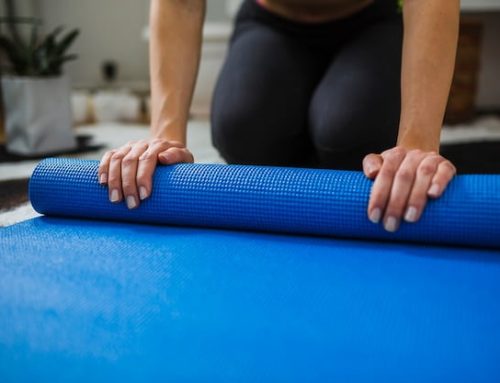Introduction
Foam Rolling is a technique that involves using a foam roller to apply pressure to various muscles in the body. This pressure can help relieve tension, improve flexibility, and reduce muscle soreness. While foam rolling has become increasingly popular in recent years, there is still some confusion and debate about the proper technique and which muscles should be targeted. One common question is whether or not it is bad to foam roll your hamstrings. In this article, we’ll explore the benefits and potential risks of foam rolling your hamstrings.
The Benefits of Foam Rolling
Before we dive into the potential risks of foam rolling your hamstrings, let’s first examine the benefits of foam rolling in general. According to a study published in the Journal of Athletic Training, foam rolling has been shown to improve flexibility, increase range of motion, and reduce muscle soreness. Additionally, foam rolling has been found to enhance the recovery process after exercise by increasing blood flow and reducing inflammation. While foam rolling may not be a cure-all for every ailment, it is an effective tool for athletes and fitness enthusiasts looking to improve their performance and reduce their risk of injury.
The Hamstrings: An Overview
Now that we’ve established the benefits of foam rolling, let’s take a closer look at the hamstrings. The hamstrings are a group of muscles located on the back of the thigh. They are responsible for flexing the knee and extending the hip, making them important for activities such as running, jumping, and squatting. Tight hamstrings can lead to a variety of issues, including lower back pain and reduced mobility.
Is It Bad to Foam Roll Your Hamstrings?
Now, to answer the question at hand: is it bad to foam roll your hamstrings? The short answer is no, it is not bad to foam roll your hamstrings. In fact, foam rolling your hamstrings can be a great way to relieve tension and improve flexibility in this area. However, there are some guidelines to keep in mind to ensure that you are foam rolling safely and effectively.
How to Safely Foam Roll Your Hamstrings
To safely foam roll your hamstrings, it is important to follow these guidelines:
1. Start with a softer foam roller: If you’re new to foam rolling, start with a softer foam roller to avoid putting too much pressure on the muscles.
2. Avoid sensitive areas: The hamstrings can be a sensitive area for some people, so it is important to avoid any areas that feel uncomfortable or painful.
3. Roll slowly: Move the foam roller slowly up and down the hamstring, pausing on any tight or sore areas.
4. Don’t overdo it: Avoid spending too much time foam rolling a specific area, as this can lead to bruising or other injuries.
By following these guidelines, you can safely and effectively foam roll your hamstrings.
The Bottom Line
In conclusion, foam rolling your hamstrings is generally safe and can help improve flexibility, reduce muscle soreness, and enhance recovery after exercise. However, it is important to follow the proper technique and guidelines to avoid injury. As with any exercise or stretching routine, it is always a good idea to consult with a healthcare professional before beginning.
References:
1. Cheatham, S. W., Kolber, M. J., Cain, M., & Lee, M. (2015). The effects of self-myofascial release using a foam roll or roller massager on joint range of motion, muscle recovery, and performance: A systematic review. Journal of athletic training, 50(5), 522-532.
2. Page, P. (2012). Current concepts in muscle stretching for exercise and rehabilitation. International Journal of Sports Physical Therapy, 7(1), 109-119.
3. Peacock, C. A., Krein, D. D., Antonio, J., Sanders, G. J., & Silver, T. A. (2015). Comparing the effects of self-myofascial release with static stretching on ankle range-of-motion in adolescent athletes. International journal of sports physical therapy, 10(2), 203-212.






